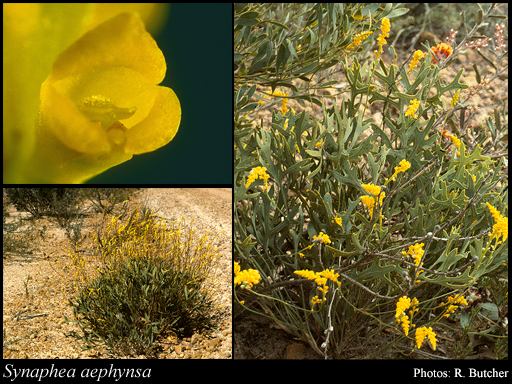- Reference
- Fl.Australia 16:487 (1995)
- Conservation Code
- Not threatened
- Naturalised Status
- Native to Western Australia
- Name Status
- Current
Erect, tufted shrub, to 0.3 m high. Fl. yellow, Jul to Oct. Gravelly laterite, sand over laterite.

Scientific Description
Shrubs; branchlets hairy. Leaves alternate, 90-230 mm long, hairy; petiole hairy; lamina flat, once divided or twice or more divided, tripartitely divided, deeply divided, indumentum appressed; distance from base of leaf to lowest lobe 105-150 mm; terminal leaf lobe 10-25 mm long, 5-8 mm wide; lowest lobes 20-60 mm long. Inflorescences yellow; scape 195-375 mm long; floral bracts 1.5-2 mm long. Perianth 5-6 mm long, glabrous; adaxial tepal 5-6 mm long; abaxial tepal 4-4.5 mm long; ovary hairy, style glabrous; style including stigmatic disc 3.5-4 mm long, lobed; stigma 1-1.2 mm long, 0.8-1 mm wide. Flowers in July, August, September or October. Occurs in the South-west (SW) Botanical Province(s), in the Geraldton Sandplains (GS), Swan Coastal Plain (SWA) or Jarrah Forest (JF) IBRA subregion(s). : Conservation code Priority Three (P3).
Distribution
- IBRA Regions
- Geraldton Sandplains, Jarrah Forest, Swan Coastal Plain.
- IBRA Subregions
- Dandaragan Plateau, Lesueur Sandplain, Northern Jarrah Forest.
- Local Government Areas (LGAs)
- Beverley, Carnamah, Coorow, Dandaragan, Gingin, Irwin, Three Springs.